My pitch for an article on the most medium solar farms was declined, so here's some words about the largest.
Explore the world’s largest solar panels, their impact on renewable energy, and how these massive installations are helping to power the future.
Solar panels are helping make our planet a greener place to live, as they can power the world using electricity generated from the sun.
You’re probably already familiar with solar panels on roofs, but what about solar farms? These are solar panel installations on the grandest scale, and they’re capable of powering towns or even entire countries with clean electricity.
We’re looking at the world’s very largest solar panel farms here, covering just how big they are, how much power they’re capable of, and their environmental benefits.
If you’re ready to get your own (understandably smaller) solar system, we can help. Simply answer a few questions about your home and we’ll give you a fixed installation price for you to consider. It’s totally free and comes with no obligation.
What is the largest solar panel?
The largest solar panels are those typically used in commercial applications — they’re usually too big for the roof of an average household. These large-scale panels can reach impressive power outputs of 700 watts (w), which is a good sight larger than the 250w to 400w panels common in residential installations.
Commercial panels are this big because it makes them ideal for large installations where you want to generate the most electricity possible.
Why can’t I just use 700w panels for my home?
To put it simply, 700w panels are much more difficult to fit on roofs, because of their size. It makes more sense to install multiple smaller panels, as they’re easier to mount on brackets on your roof, and to move about in the first place.
Large solar panels require different inverters too, due to the higher voltage or currents, which can increase the total installation cost. This is another reason why it’s best to stick with multiple, smaller solar panels.
The absolute largest panel you can currently buy for a residential installation is 500w, but even this size can make it difficult to install on some roofs.
Where are the largest solar panels used?
The largest solar panels are reserved for large-scale solar installations, such as in solar farms. These solar farms function exactly like solar panels would on your roof, only at a much bigger scale.
Solar farms represent really exciting opportunities to provide huge amounts of power using only the sun. When combined with other renewable energy sources too, solar farms will likely play an essential part in helping the planet reach net-zero emissions.
Large-scale solar projects are also exciting for their potential to boost local economies and provide jobs in the low-carbon sector.
What are the world’s largest solar farms?
The world’s largest solar farms are capable of incredible energy output, and have the potential to stop millions of tonnes of CO2 emissions from entering the atmosphere.
We’ve covered the very largest solar farms below, looking at their total (and sometimes future) capacity, how many homes they can power, and their environmental benefits.
Xinjiang, China

This gargantuan solar farm in the Xinjiang Province of China is currently the world’s largest solar farm, with an absolutely massive solar capacity of 3.5 gigawatts (GW).
That’s enough to quite literally power a country — the solar farm can meet the energy demands of either Papua New Guinea or Luxembourg for one year, or roughly 6.09 billion kilowatt hours of electricity annually.
If this solar farm were to operate in the UK, it could power just over 2.25 million UK homes for a year.
All this power comes from a dizzying array of solar panels stretched across nearly 33,000 acres of land. For context, that’s nearly 10% of the entire landmass of London!
Golmud Solar Park, China
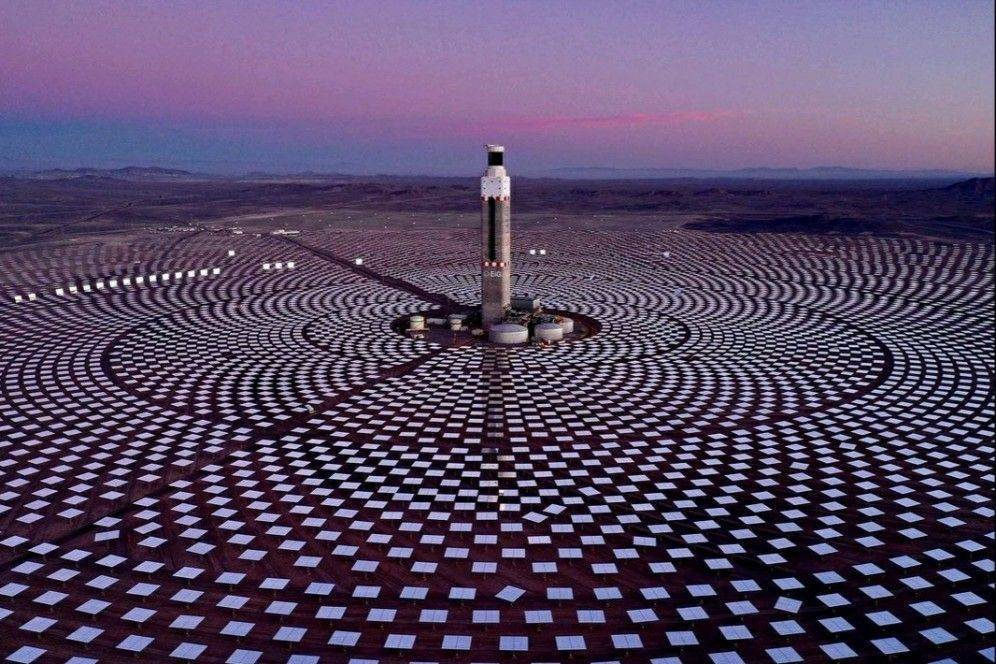
The second largest solar farm in the world is also in China, located in the Qinghai Province. Golmud Solar Park has an energy capacity of 2.8GW — slightly less impressive than Xinjiang but still plenty to power hundreds of thousands of homes with ease.
Over a year, Golmud Solar Park could power close to two million UK households. Give it time, and this number is likely to be much higher, because China has big plans to expand Golmud Solar Park significantly.
It aims to increase capacity to roughly 16GW, which if our napkin maths are to be believed, would mean the ability to power around 11.8 million UK homes.
Related reading:
Bhadla Solar Park
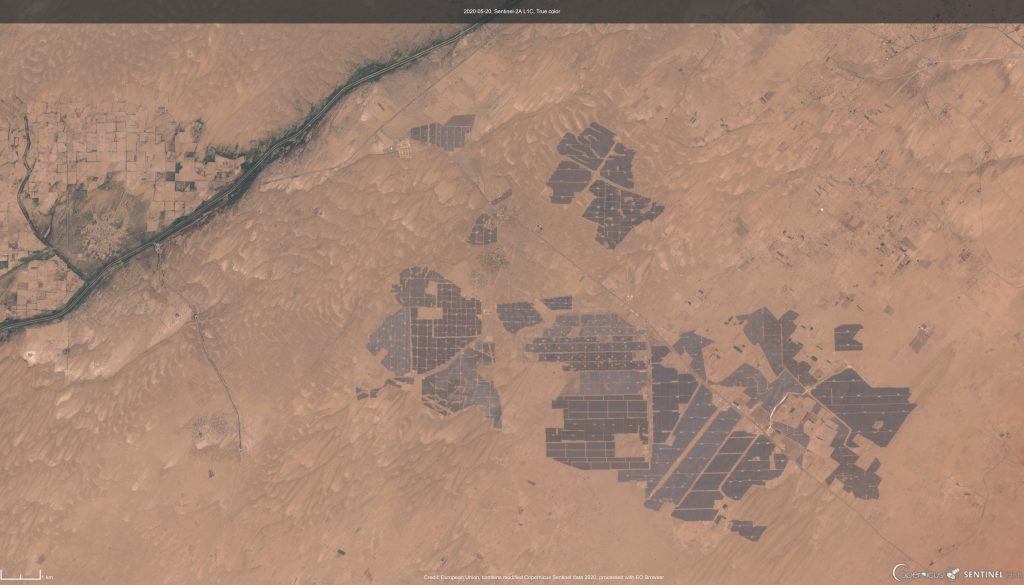
For the third largest solar farm in the world, we’re moving away from China and going to India, where the Bhadla Solar Park sits with a total solar capacity of 2.7GW.
First commissioned in 2015, the gargantuan solar farm covers a total area of 14,000 acres across the uninhabitable Thar Desert. This very desert benefits from very high levels of solar irradiation, which makes it a pretty perfect location for a solar farm!
What makes Bhadla Solar Park pretty special is its use of highly efficient solar technologies, such as a system that automatically tilts the panels towards the sun. This in turn maximises the amount of solar energy the panels can absorb throughout the day.
Pavagada Solar Park
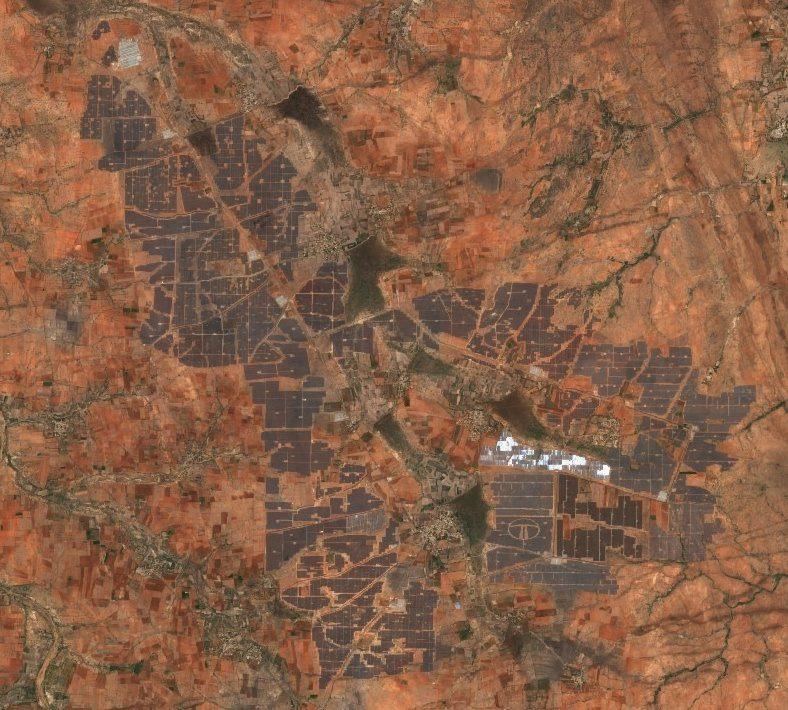
Pavagada Solar Park, the fourth entry on this list, is in India too. Its capacity is just a little over 2GW, which helps it power the nearby villages and towns with clean, solar-generated electricity.
What’s great about the Pavagada Solar Park (it also goes by the Shakti Sthala Solar Park), is that it provides income to the farmers whose lands were leased to support the solar infrastructure.
For the 2,300 farmers benefiting from this scheme, the impact is huge. The Karnataka region where the solar farm is located is unfortunately seeing the impact of climate change in the form of droughts, affecting agriculture.
The Pavagada Solar Park is instead helping transform the area into a renewable energy hotspot, helping boost the local economy and provide a lifeline for farmers unable to make a dependable income from agricultural means alone.
Benban Solar Park, Egypt

Moving away from India and China for the first time, to Africa, we find the Benban Solar Park in Egypt. It’s comfortably Africa’s largest solar farm with roughly 1.7GWs of installed solar capacity — the next largest solar farm in Africa is the Ouarzazate solar complex in Morocco, with a comparably smaller capacity of 580 megawatts (MW).
Benban is a big part of the Egyptian government’s admirable goal of having 42% of Egypt’s electricity come from renewable sources by 2030.
It’s great to see Benban’s positive impact on reducing carbon emissions — around two million tonnes of carbon dioxide per year. This is enough to offset the average carbon footprint of around 246,000 UK households.
More solar guides:
Mohammed Bin Rashid Al Maktoum Solar Park, UAE
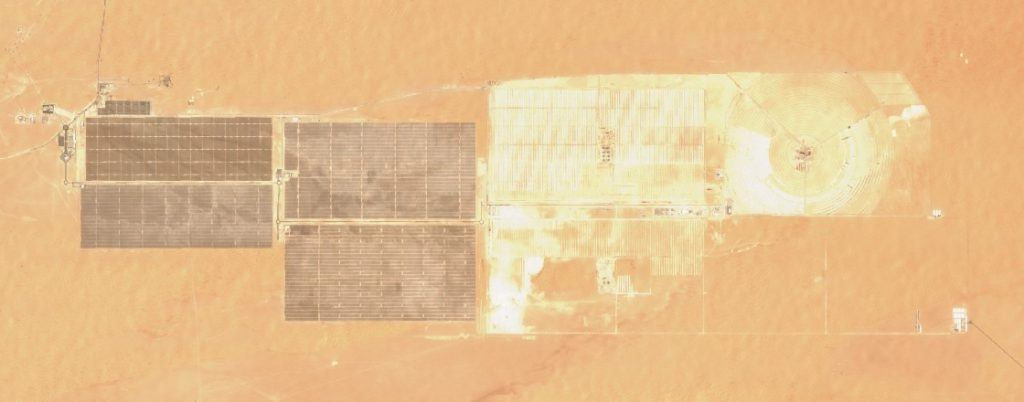
The UAE might be better known for its vast oil reserves (and all the wealth that comes with it), but the Middle Eastern country has started to diversify into more renewable energy projects.
Particularly solar energy, which is emphasised by the ever-expanding Mohammed Bin Rashid Al Maktoum Solar Park. This huge expanse of solar panels is technically the largest single-site solar park in the world, according to the Independent Power Producer (IPP) model (an IPP is an entity that generates electricity and isn’t connected to a government).
Though with a current capacity of 1.6GW, this solar farm remains in sixth place for now. At least until 2030, when the farm is projected to expand to 5GW and have the capability to remove an impressive 5.8 million tonnes of CO2 from the atmosphere.
Mohammed Bin Rashid Al Maktoum Solar Park is also home to the world's tallest solar tower, at 260 metres high.
Tengger Desert Solar Park, China
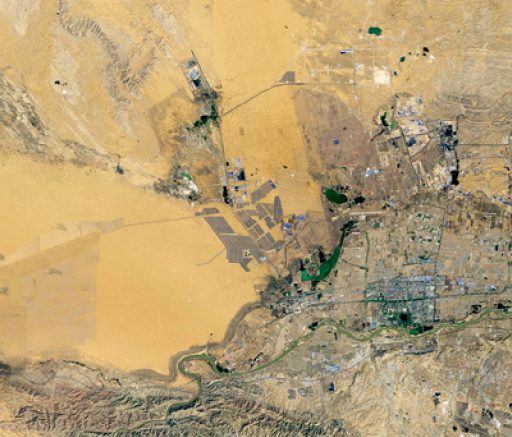
It’s another entry in the list for China, who are definitely world leaders when it comes to installed solar capacity (they’re on track to reach 1,200GW by the end of 2024).
Tengger Desert Solar Park, at 1.5GW, has the ability to power a little over 600,000 Chinese homes. It’s also been called the “Great Wall of Solar”, due to its imposing size stretching some 1,200km.
The extreme weather conditions of the Tengger Desert have meant the panels used in the solar farm are especially resilient. Dust storms are always a threat, and the region receives very little rain, so cleaning the panels semi-regularly is important.
Noor Abu Dhabi, UAE

The Noor Abu Dhabi solar farm in the UAE is one of the largest single-site solar farms in the world. This basically means a solar farm with an unbroken stretch of solar panels, which visually is very impressive — it’s a single span of solar panels covering 8km2.
This solar farm is another part of the UAE’s continuing shift towards renewable energy. With a capacity of 1.2 GW and more than 3.3 million of solar panels, Noor Abu Dhabi could power 888,000 UK homes for a year.
Noor Abu Dhabi also removes around one million tonnes of carbon dioxide from the atmosphere each year, which is the equivalent of taking 200,000 cars off the road.
Other notable solar farms
Solar farms are being built in locations around the world, which is excellent news for the planet! More solar energy = less pollution from fossil fuels, at the end of the day. Let’s take a quick look at some of the other solar projects happening in different countries.
The US
Solar power is increasingly popular across the US, with several large-scale solar farms already in operation. The biggest is Gemini, a solar-plus-storage project in Nevada with a combined power output of 1.07GW — 690MW from solar panels alone, with the potential for more from the massive 380MW storage battery.
The largest solar farm without storage is currently Solar Star, found in Los Angeles. Its capacity of 579MW powers around 255,000 homes and it takes up roughly 3,200 acres.
A solar project also in California, the Westlands Solar Park, aims to eclipse this with a capacity of 2.7GW, which would catapult the US straight into the top spots for largest solar farms in the world.
The UK
The UK might not be known for its consistent sunshine, but that doesn’t mean solar farms aren’t a viable way to generate lots of electricity! Far from it in fact — the UK is building and expanding solar farms all the time. By 2028, the UK’s total solar capacity is expected to reach 43GW.
Currently, the solar farm at the Llanwern Solar Farm in south-east Wales is the biggest, with a capacity of 75MW. It’s not quite close to the scale seen in some of the solar farms above, but it’s still enough to power just over 20,000 UK households.
There are plans to build much larger solar farms in the UK though, with two projects in particular standing out — Project Fortress in Kent (373MW capacity) and the Cottam Solar Project (600MW).
A quick aside about solar panels in the UK — despite the often cloudy weather here, solar panels work just fine. In fact, even under heavy cloud cover, solar panels can still operate at roughly 33% of their maximum capacity, so they’ll still provide some electricity.
How is solar farm technology improving?
As with residential solar panels, the technology in solar farms is always getting better. Just a few months ago, scientists at the Oxford University Physics Department developed a new approach to generating solar electricity that could dramatically reduce the need for solar farms in the first place.
In short, their new power-generating material can be used to coat all sorts of objects, because it’s much thinner than traditional silicon cells. That means there could be less need to build large-scale solar farms, because far more objects and surfaces can be coated by this material.
Another interesting innovation for solar farms is to build them on water. They work the same as land-based installations, but the water keeps the panels cooler, increasing efficiency by 5% – 10%.
Global solar energy capacity
Solar has come a long way in the last twenty years or so — in 2003, the total global solar energy capacity was 2.6GW. By 2023, the world’s cumulative solar capacity had reached a hugely impressive 1,624GW, according to Statista.
Not quite enough to meet the planet’s electrical needs, which are roughly 17.7 terawatts (one terawatt = 1,000GW), but we’re on the right track.
Next Steps For Your Solar Journey:
When planning to install solar panels for your home, there are several important factors to consider. Make sure to refer to the following guides to help you make informed decisions:
To dive deeper into these topics, head over to our advice section, check out our YouTube channel for informative videos, or read a customer case study to see how others have benefited from their solar installation.
Get a Quote for Solar Today
Without boasting you should get your solar installed with us, here's why:
Thousands of Happy Customers: We boast an average score of 4.9 on Trustpilot, outperforming the market leader.
Which? Trusted Trader: Heatable is proudly recognised as a Which? Trusted Trader.
MCS Accredited: Our accreditation by the Microgeneration Certification Scheme (MCS) ensures high-quality standards.
Exclusive Panels: We offer REA Fusion solar panels, available only through Heatable.
Consumer Protection: As members of the HIES consumer code, we provide 2-year deposit protection.
Flexible Payment Options: Choose from multiple payment methods, including finance options.
Fixed Price Guarantee: Enjoy transparency with no hidden costs.
Save Your Quote: You can save your quote and decide later.
Bespoke Design Tool: Draw your own conclusion (literally) on whether solar is worth it for you, here.





